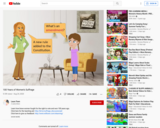
Learn how brave women fought for the right to vote and won 100 years ago.
- Subject:
- History
- U.S. History
- Material Type:
- Lesson
- Author:
- Laura Town
- Williamstown Communications
- Karen Hoffman
- Date Added:
- 08/18/2022

Learn how brave women fought for the right to vote and won 100 years ago.
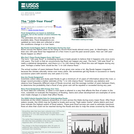
This site describes how and when 100-year floods occur. It states that flood designations are based on statistical averages, not on the number of years between big floods. It also suggests that it would make more sense to refer to 100-year floods as 1-in-100 chance floods. This resource is a United States Geological Survey (USGS) Fact Sheet. It can be used in teaching quantitative skills.
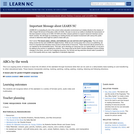
This is an ongoing series of lessons to teach the 26 letters of the alphabet through functional skills that can be used on a daily/weekly basis building on and transferring to other educational task. These lessons incorporate coloring, marking, painting, cutting, pasting, creating, listening and following directions.
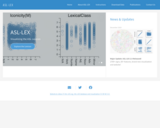
ASL-LEX is a database of lexical and phonological properties of American Sign Language signs. It was first released in 2016 with nearly 1,000 signs. ASL-LEX was updated in Fall 2020 with greatly expanded information and an increased size of 2,723 signs.
ASL-LEX is available as a searchable web interface and as raw data in spreadsheet form. This website hosts the web visualization and provides instructions for how to use and download the database.
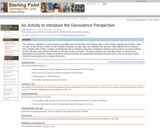
This role-playing exercise introduces students to geology by having them examine rocks from the perspective of a child, a sculptor, a geologist or someone from another walk of life.
(Note: this resource was added to OER Commons as part of a batch upload of over 2,200 records. If you notice an issue with the quality of the metadata, please let us know by using the 'report' button and we will flag it for consideration.)

This is a template for lessons developed by the San Francisco Unified School District SLANT Cohort. (Replace this text with a short description of your SLANT-inspired lesson. Then add learning goals, keywords, standards alignments, subjects, and grades in their respective fields.)
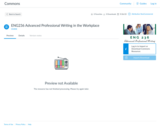
Practical writing for the world of work. Includes business correspondence to technical reports. Analyze and create written digital products. Focus on understanding the audience for effective communication. Extensive critical reading and writing about workplace texts. Emphasis on fluency in critical writing. Includes research skills and writing a critical, documented report. Prerequisites: ENG101 or 101A or 103 or 136. Reading Proficiency.
COURSE CONTENT:
Writing skills: active verbs, specific details, imperative tone, parallelism, and information literacy
Workplace communication skills: memorandums, business letters, e-mails, blog posts, etc.
Outline development
Graphical integration: instructions, presentations
Technical project skills: research, reports, proposals
Audience and rhetorical situation
Workplace dynamics
Content production and delivery processes
LEARNING OUTCOMES:
Demonstrate practical writing skills for workplace proficiency. (1, 2)
Create digital and written communication documents integrating data. (2)
Use organizational strategies to support the creation of written and digital workplace documents for a variety of purposes. (3)
Write effective instructions incorporating graphics to communicate with peers and clients. (4)
Locate and evaluate information to support workplace documents. (5)
Analyze and interpret information to support workplace documents. (5)
Integrate and document information to support workplace documents. (5)
Analyze the rhetorical situation of digital and written communication to adapt for internal and external audiences; hierarchies and roles; and for psychological, social, cultural, and political factors. (6)
Examine dynamics of organizational psychology in the workplace for the purpose of improving communication. (7)
Analyze written documents, digital content, and oral presentations in order to examine the content production and delivery processes of the workplace writer. (8)

Aepyceros melampus: Information
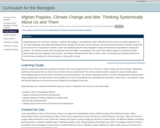
This contemplative practice inquires into the complex web of interdependencies linking global climate change, the War on Terror, Afghan poppy production, opiate addiction, and food security through the lens of systems theory. The exercise challenges students to consider these linkages not only conceptually but also somatically and emotionally.
(Note: this resource was added to OER Commons as part of a batch upload of over 2,200 records. If you notice an issue with the quality of the metadata, please let us know by using the 'report' button and we will flag it for consideration.)

This course focuses on alternative ways in which the issues of growth, restructuring, innovation, knowledge, learning, and accounting and measurements can be examined, covering both industrialized and emerging countries. We give special emphasis to recent transformations in regional economies throughout the world and to the implications these changes have for the theories and research methods used in spatial economic analyses. Readings will relate mainly to the United States, but we cover pertinent material on foreign countries in lectures.
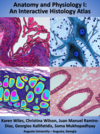
This Anatomy and Physiology I Histology Atlas helps students better understand the complex discipline of tissue histology with the use of interactive H5P activities. Students can reveal or hide illustration overlays drawn to help students visualize cell- and tissue-level structures.
This open access histology atlas was made possible through generous grant funding by The University System of Georgia through the Affordable Learning Georgia initiative: https://www.affordablelearninggeorgia.org/.

Angles is an annual online magazine of exemplary writing by MIT students. All of the works published in Angles since its first edition in 2008 were written by students in the introductory writing courses. These courses, designated as CI-HW (Communications-Intensive Humanities Writing) subjects, bring together students who love to write, students who struggle with writing, students who thrive in seminar-style classes, and students who just want a chance to develop their English skills. These students prosper together and produce some remarkable work. Angles has provided them with a public outlet for that work. It also provides the CI-HW instructors with material that inspires and guides their current students.
In these classes, students learn to read more critically, to address specific audiences for particular purposes, to construct effective arguments and narratives, and to use and cite source material properly. Students in these courses write a great deal; they prewrite, write, revise, and edit their work for content, clarity, tone, and grammar and receive detailed feedback from instructors and classmates. Assigned readings are related to the thematic focus of each course, and are used as demonstrations of writing techniques. The pieces in Angles may be used as teaching tools and practical examples for other students and self-learners to emulate.
You can find Angles Online.
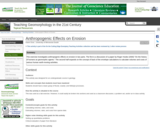
This exercise focuses on anthropogenic effects on erosion. It could be run as a single lab or as a series of in-class exercises or problem sets. We discussed an article by Hooke and used it as a launching pad for a discussion of back of the envelope calculations. Students then estimate the volume moved by mountain-top removal and how long it might take a river to mobilize that sediment. They estimate the cost for beach nourishment along Florida beaches. They estimate the contribution of local construction projects and road gravel to stream sediment loads. This activity gives students a chance to formulate a problem, make simple measurements, estimate unknowns, and calculate volumes, rates, and costs of various human earth-moving activities.
Designed for a geomorphology course
Addresses student fear of quantitative aspect and/or inadequate quantitative skills
Uses geomorphology to solve problems in other fields
(Note: this resource was added to OER Commons as part of a batch upload of over 2,200 records. If you notice an issue with the quality of the metadata, please let us know by using the 'report' button and we will flag it for consideration.)
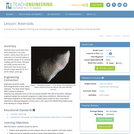
In this lesson, students learn some basic facts about asteroids in our solar system. The main focus is on the size of asteroids and how that relates to the potential danger of an asteroid colliding with the Earth. Students are briefly introduced to the destruction that would ensue should a large asteroid hit, as it did 65 million years ago.
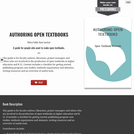
Short Description:
This guide is for faculty authors, librarians, project managers and others who are involved in the production of open textbooks in higher education and K-12. Content includes a checklist for getting started, publishing program case studies, textbook organization and elements, writing resources and an overview of useful tools.
Long Description:
This guide is for faculty authors, librarians, project managers and others who are involved in the production of open textbooks in higher education and K-12. It includes a checklist for getting started, publishing program case studies, textbook organization and elements, writing resources and an overview of useful tools.
Contributors include: Karen Bjork, Head of Digital Initiatives, Portland State University Library. Caitie Finlayson, Assistant Professor, Department of Geography, University of Mary Washington. Dianna Fisher, Director of Open Oregon State. Linda Frederiksen, Head of Access Services, Washington State University, Vancouver. Ralph Morelli, Professor, Computer Science, Emeritus, Trinity College. Shane Nackerud, Technology Lead, Library Initiatives, University of Minnesota Libraries. Deb Quentel, Director of Curriculum Development & Associate Counsel, Center for Computer-Assisted Legal Instruction (CALI). Cody Taylor, Emerging Technologies Librarian, University of Oklahoma Libraries. Anita R. Walz, Open Education, Copyright & Scholarly Communications Librarian, Virginia Tech.
The authors invite the open textbook community to contribute their experience and knowledge for future editions of this guide. If you would like to offer additional case studies, frameworks and examples, please email open@umn.edu. Together we can create a flexible resource to support open textbook creation in a variety of contexts.
Word Count: 15985
(Note: This resource's metadata has been created automatically by reformatting and/or combining the information that the author initially provided as part of a bulk import process.)

Introduction to additionGoal: Students will learn the basic concepts of addition. Activity: Use base ten mats and checkers to introduce addition. Give each student two checkers and have them place them on their mat. Then, give each student two more checkers and have them count the total number of checkers. Write the equation on the board. Repeat this process using different numbers until they understand the basic concept. At this level, the sum should be ten and below. Finally, have students play the games provided in this resource.Assessment: An addition assessment is provided in this resource.
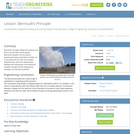
Bernoulli's principle relates the pressure of a fluid to its elevation and its speed. Bernoulli's equation can be used to approximate these parameters in water, air or any fluid that has very low viscosity. Students learn about the relationships between the components of the Bernoulli equation through real-life engineering examples and practice problems.
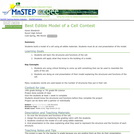
This activity is designed to help students understand the structures and functions of the cell by building a model.
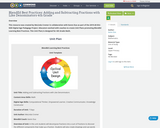
This resource was created by MeLinda Cromer in collaboration with Karen Dux as part of the 2019-20 ESU-NDE Digital Age Pedagogy Project. Educators worked with coaches to create Unit Plans promoting BlendEd Learning Best Practices. This Unit Plan) is designed for 4th Grade Math.
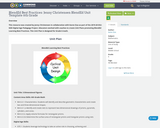
This resource was created by Jenny Christensen in collaboration with Karen Dux as part of the 2019-20 ESU-NDE Digital Age Pedagogy Project. Educators worked with coaches to create Unit Plans promoting BlendEd Learning Best Practices. This Unit Plan is designed for Grade 6 math.